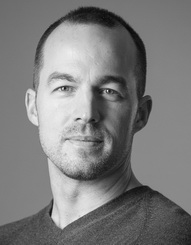
Our Doctor Paradis recently spoke with a friend about cardiovascular health after he noticed how his friend got winded working on his lawn. The tasks themselves were not that vigorous – they shouldn’t have left him so short of breath.
Doctor Paradis pointed out that this wasn’t normal and should be considered a red flag. His friend needed to exercise more for his cardiovascular health.
It’s the scourge of the modern urban lifestyle – too much time in sedentary activities, eating unhealthy snacks. We gain weight, our metabolisms burn fewer calories, the pressure literally mounts on our bodies. Walking up the stairs becomes a chore, never mind racing the kids to the park.
One of the first signs of this decline in our health is often the least obvious – high blood pressure, or hypertension.
It’s been called “the world’s most under-addressed preventable health problem.”
For the majority of people, it takes simple changes in diet and some regular exercise to avoid it. In fact, as we discussed in a recent post, changes in diet and exercise is often the better option than medication. Losing even five pounds can make a notable difference.
But rates continue to rise
According to Hypertension Canada’s 2018 guidelines, about one in four adult Canadians – that’s roughly 7.5 million people – now have it. It’s estimated that about 20 per cent of us with hypertension aren’t even aware of it.
Last year, American medical authorities tightened their criteria as to what constitutes a blood pressure reading that’s high enough to be considered hypertensive. Under the new U.S. guidelines, as many as half of adult Americans have high blood pressure.
Whether it is Canadian guidelines or American ones, the general consensus is that a blood pressure reading of 130/80 or more warrants action.
Why? Because rising blood pressure over the long term causes atherosclerosis – a process of damage and plaque buildup in your blood vessels. This is the biggest contributor to premature death (death before the age of 65), usually from heart attack and stroke.
Hypertension can hit anyone at any age. It has unfortunately become more common among children, thanks to rising rates of childhood obesity. But adults at and beyond middle age remain by far the largest at-risk groups.
There are often no symptoms
Do you have hypertension? There is a reason it is called the silent killer. Too often, there are no obvious signs. Symptoms that might manifest include:
- Severe headaches
- Fatigue or confusion
- Vision problems
- Chest pain
- Difficulty breathing
- Irregular heartbeat
- Blood in the urine
- Pounding in your chest, neck, or ears
Regular monitoring is key
But the only way to be sure is to monitor your blood pressure regularly.
This is easy to do at those public machines at the local pharmacy, or with an at-home unit, but it’s important that you do it right for an accurate reading. You need to be calm, relaxed, and have taken a trip to the bathroom. Only regular readings over a period of time can paint an accurate picture. Hypertension Canada has simple guidelines and a log you can download.
When is the best time to start doing this? Why now, of course.
If you have any questions, please call our offce!
